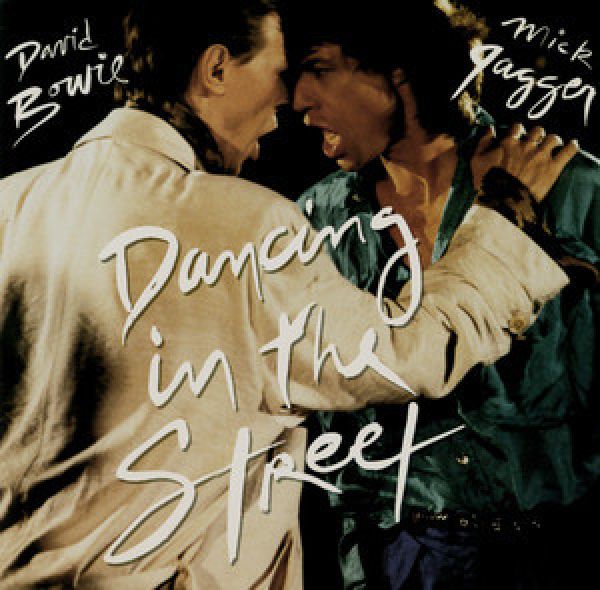
Clive Langer is one of the key figures behind the sound of British pop and new wave. Alongside his longtime partner Alan Winstanley, he produced Madness, Dexys Midnight Runners (Come On Eileen), worked with Elvis Costello, Morrissey… and, of course, David Bowie. As a musician, he was also part of Liverpool’s Big in Japan in the late 1970s, crossing paths with many of the scene’s defining movements.
In the summer of 1985, Langer suddenly found himself at the heart of Live Aid. A few months earlier, neither David Bowie nor Mick Jagger had taken part in the Band Aid single Do They Know It’s Christmas?. To join the charitable momentum, they decided to record a duet version of Dancing in the Street. It was done almost off-the-cuff, squeezed in between takes of Absolute Beginners. The result? A video broadcast on July 13 during the concert, and a single that became one of Live Aid’s most kitsch – yet iconic – symbols.
In 2020, I had the chance to interview Clive Langer. With Bowie having passed away in 2016, his recollections now carry even more weight, shedding light on the humanity and spontaneity behind one of the most memorable – and unlikely – collaborations of the 1980s.
How did you first start working with David Bowie on Absolute Beginners?
“I’d known Julian Temple, the director, since my younger years. When he launched the film Absolute Beginners, he brought in Alan Winstanley and myself to produce the music. David Bowie got involved, and to our surprise, he agreed to work with us. The first time he played us his demo of Absolute Beginners, recorded at Abbey Road, it was already a potential hit.”
And it was during those sessions that Dancing in the Street was born?
“Yes. One day, while we were working on Absolute Beginners, David came to me and said: ‘There’s this charity concert, Live Aid. Can we record Dancing in the Street this afternoon with Mick? Don’t worry, it’s only for a video, not for a single…’ (laughs). So we ended up recording Absolute Beginners and Dancing in the Street the same day, in the same studio.”
What was the atmosphere like that day?
“It was quite something, of course. Jagger is more aloof – he’s Mick Jagger all the time. David, on the other hand, could just be ‘David’, and then become David Bowie again. But the chemistry worked. Jagger came into the room, heard the backing track, and immediately started dancing. That put everyone in the mood.”
Did you keep in touch with Bowie after that session?
“Yes, quite often. We’d go out for dinners in London while doing overdubs, I even bumped into him skiing. I remember one New Year’s Eve with him, Iggy Pop and some other friends. He could call me at any time – one day my wife picked up the phone and said: ‘It’s David Bowie on the line!’ (laughs). He was very approachable, warm, someone who was simply great to spend time with.”
A duet turned into a symbol
Recorded in just a few hours, almost by chance, the Bowie–Jagger duet exceeded all expectations. Broadcast on the giant Live Aid screens and later released as a single, Dancing in the Street became a global charity anthem. Today, with Bowie’s legacy towering ever higher since his death in 2016, Clive Langer’s words bring us back to the spontaneity and joy of that moment – a reminder of the unique energy Bowie carried into every collaboration.
Back in the news
To mark the 40th anniversary, a special 12″ white vinyl reissue was released on 29 August 2025. This collector’s edition brings together, for the very first time, all the official mixes – the Clearmountain Mix, instrumental, Steve Thompson Mix, edit and dub – and nearly 30% of proceeds will be donated by David Bowie estate, Jagger and Parlophone to The Band Aid Charitable Trust . A perfect opportunity to rediscover this one-off collaboration in a collector’s format.